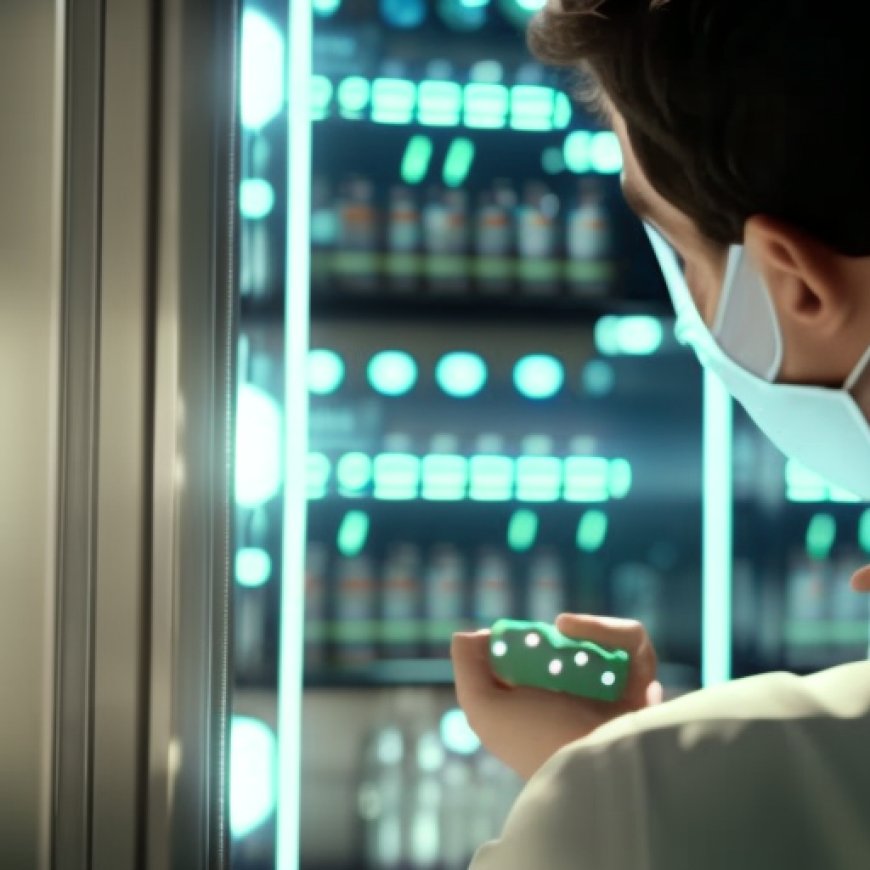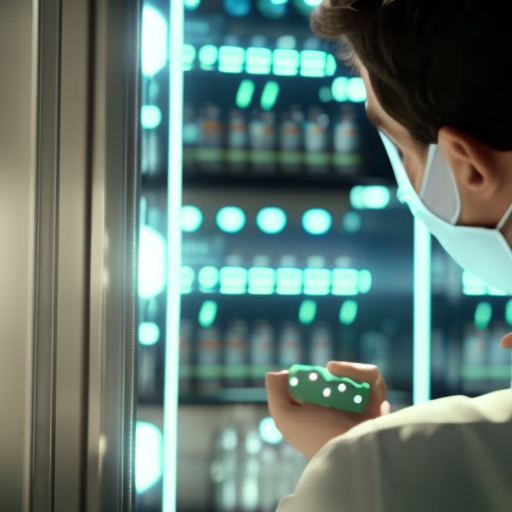Scientists discover toothpaste ingredient could be the key to extending electric vehicle range: ‘This made all the difference’
Scientists discover toothpaste ingredient could be the key to extending electric vehicle range: 'This made all the ... The Cool Down


Fluoride Electrolyte: Extending the Lifespan of Electric Vehicle Batteries
Fluoride is commonly known as the compound in toothpaste that prevents cavities and strengthens enamel. However, researchers from the U.S. Department of Energy’s Argonne National Laboratory have made an exciting discovery – a fluoride electrolyte that could potentially extend the lifespan of electric vehicle (EV) batteries.
A New Generation of Batteries for Electric Vehicles
According to Zhengcheng (John) Zhang, one of the researchers, a new generation of battery types for electric vehicles beyond lithium-ion is on the horizon. While most electric vehicles currently on the market are powered by lithium-ion batteries, scientists worldwide are actively exploring alternative battery types, ways to enhance battery longevity, and efficient battery recycling methods.
These efforts are driven by the fact that lithium-ion batteries contain non-renewable substances like lithium, which require mining and contribute to environmental degradation. As a result, they are not a sustainable long-term solution for the EV industry.
The Fluoride Electrolyte Breakthrough
The breakthrough battery developed by the Argonne National Laboratory still contains lithium but reportedly delivers double the energy density of a traditional lithium-ion battery. The key innovation lies in the use of fluoride to prevent battery degradation over multiple charging cycles.
Zhang explained that the substitution of fluorine for hydrogen atoms in the cation part of the ionic liquid structure of the electrolyte made all the difference in maintaining high performance for hundreds of cycles in a test lithium metal cell.
Advancing Sustainable Technology for Electric Vehicle Batteries
Advancements in electric vehicle battery technology have significant implications for achieving the Sustainable Development Goals (SDGs). By replacing gas-powered cars with EVs, a report from the American Lung Association suggests that the U.S. could prevent 89,300 premature deaths by 2050.
Join Our Newsletter for Weekly Updates on Sustainable Innovations
Stay informed about the latest innovations that improve our lives and contribute to saving our planet. Sign up for our free newsletter to receive weekly updates on the coolest sustainable tech.
SDGs, Targets, and Indicators
-
SDG 7: Affordable and Clean Energy
- Target 7.2: By 2030, increase substantially the share of renewable energy in the global energy mix.
- Indicator 7.2.1: Renewable energy share in the total final energy consumption.
-
SDG 9: Industry, Innovation, and Infrastructure
- Target 9.4: By 2030, upgrade infrastructure and retrofit industries to make them sustainable, with increased resource-use efficiency and greater adoption of clean and environmentally sound technologies and industrial processes.
- Indicator 9.4.1: CO2 emission per unit of value added.
-
SDG 12: Responsible Consumption and Production
- Target 12.2: By 2030, achieve the sustainable management and efficient use of natural resources.
- Indicator 12.2.1: Material footprint, material footprint per capita, and material footprint per GDP.
-
SDG 13: Climate Action
- Target 13.2: Integrate climate change measures into national policies, strategies, and planning.
- Indicator 13.2.1: Number of countries that have communicated the strengthening of institutional, systemic, and individual capacity-building to implement adaptation, mitigation, and technology transfer.
Analysis
The issues highlighted in the article are related to the development of alternative types of batteries for electric vehicles (EVs) and the need to make existing batteries last longer. These issues are connected to several Sustainable Development Goals (SDGs) and their targets.
1. SDGs Addressed or Connected:
- SDG 7: Affordable and Clean Energy
- SDG 9: Industry, Innovation, and Infrastructure
- SDG 12: Responsible Consumption and Production
- SDG 13: Climate Action
2. Specific Targets:
- Target 7.2: Increase substantially the share of renewable energy in the global energy mix.
- Target 9.4: Upgrade infrastructure and retrofit industries to make them sustainable, with increased resource-use efficiency and greater adoption of clean and environmentally sound technologies and industrial processes.
- Target 12.2: Achieve the sustainable management and efficient use of natural resources.
- Target 13.2: Integrate climate change measures into national policies, strategies, and planning.
3. Indicators:
- Indicator 7.2.1: Renewable energy share in the total final energy consumption.
- Indicator 9.4.1: CO2 emission per unit of value added.
- Indicator 12.2.1: Material footprint, material footprint per capita, and material footprint per GDP.
- Indicator 13.2.1: Number of countries that have communicated the strengthening of institutional, systemic, and individual capacity-building to implement adaptation, mitigation, and technology transfer.
Table: SDGs, Targets, and Indicators
| SDGs | Targets | Indicators |
|---|---|---|
| SDG 7: Affordable and Clean Energy | Target 7.2: Increase substantially the share of renewable energy in the global energy mix. | Indicator 7.2.1: Renewable energy share in the total final energy consumption. |
| SDG 9: Industry, Innovation, and Infrastructure | Target 9.4: Upgrade infrastructure and retrofit industries to make them sustainable, with increased resource-use efficiency and greater adoption of clean and environmentally sound technologies and industrial processes. | Indicator 9.4.1: CO2 emission per unit of value added. |
| SDG 12: Responsible Consumption and Production | Target 12.2: Achieve the sustainable management and efficient use of natural resources. | Indicator 12.2.1: Material footprint, material footprint per capita, and material footprint per GDP. |
| SDG 13: Climate Action | Target 13.2: Integrate climate change measures into national policies, strategies, and planning. | Indicator 13.2.1: Number of countries that have communicated the strengthening of institutional, systemic, and individual capacity-building to implement adaptation, mitigation, and technology transfer. |
Behold! This splendid article springs forth from the wellspring of knowledge, shaped by a wondrous proprietary AI technology that delved into a vast ocean of data, illuminating the path towards the Sustainable Development Goals. Remember that all rights are reserved by SDG Investors LLC, empowering us to champion progress together.
Source: thecooldown.com

Join us, as fellow seekers of change, on a transformative journey at https://sdgtalks.ai/welcome, where you can become a member and actively contribute to shaping a brighter future.







